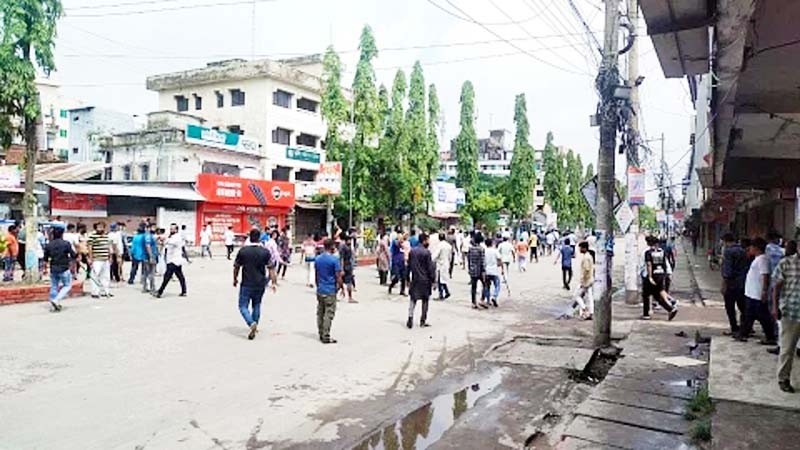- Intimidation or bloodshed cannot halt Bangladesh’s march to democracy |
- Khaleda Zia integral to an important chapter in BD history: Yunus |
- Enthusiasm marks Victory Day celebrations across Bangladesh |
- Dhaka-Delhi ties deep; to be shaped by trust, dignity, mutual respect |
- EU deploys election observation mission to Bangladesh |
3 Dead in Nationwide Student Protests Across Bangladesh

Students and the ruling party men clash in Munshiganj twon today
At least three people have been killed and over 100 injured in clashes across Bangladesh, as nationwide student protests intensify. The unrest, driven by a non-cooperation movement demanding the resignation of Prime Minister Sheikh Hasina, underscores escalating political tensions.
In Munshiganj, violence erupted near the Super Market area around 10:45 am. Abu Hena Mohammad Jamal, superintendent of Munshiganj General Hospital, reported two fatalities and multiple injuries. Victims are receiving treatment for their wounds.
In Magura, confrontations between protesters and a mix of police and Awami League supporters resulted in one death and at least 20 injuries, including among police personnel. Azizul Haque from Magura Sadar Hospital confirmed the fatality and highlighted the challenges of treating the influx of casualties.
Gazipur saw heightened unrest as students blocked the highway from Shafipur Bazar to Chandra Trimor. The situation escalated when Awami League leaders gathered at the Chandra upazila office, which was set on fire, and a nearby police box was vandalized. The blockade caused significant traffic disruptions and intensified the conflict.
Dhaka, the capital, was unusually quiet as both the Anti-Discrimination Students Movement and the Awami League-led 14-party alliance held major events. The city saw minimal traffic, with many businesses closed and public transport severely restricted. Key roads, including the Dhaka-Chattogram Highway, were blocked, causing major disruptions. The Dhaka Stock Exchange's DSEX index also dropped sharply as investor confidence wavered.
In Narayanganj, protesters vandalized at least three garment factories in Kayempur. This led factory owners to declare a leave for all workers in the Bangladesh Small and Cottage Industries Corporation (BSCIC) industrial city, impacting around 250,000 employees. Mohammad Hatem of the Bangladesh Knitwear Manufacturers and Exporters Association (BKMEA) attributed this decision to the violence and inadequate police response.
The unrest has deeply affected daily life, with Dhaka’s streets unusually empty and commuters facing long waits or opting for alternate transport. Areas such as Mirpur, Mohammadpur, Uttara, Mohakhali, and others experienced low traffic and limited movement.
As the situation remains tense, the ongoing protests and governmental responses are set to shape Bangladesh's political landscape in the coming days.

